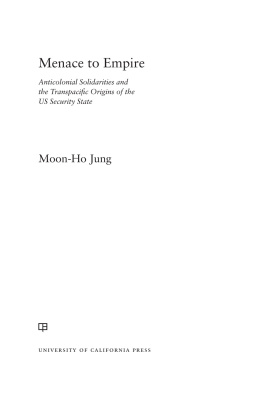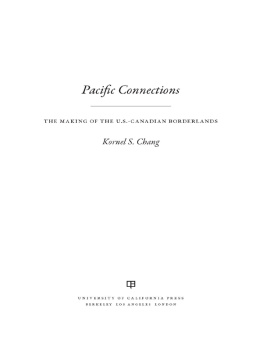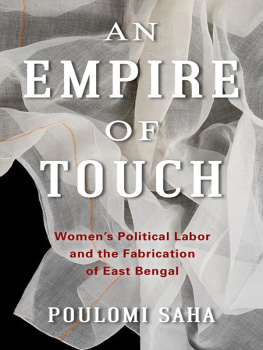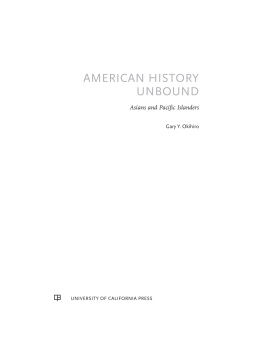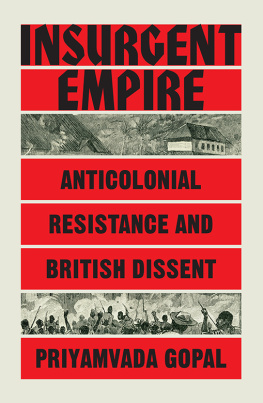Acknowledgments
I conceived of Menace to Empire a long time ago, at Oberlin College, where I taught for two years. As I prepared for a variety of courses in US history, I could not explain readily why US immigration laws fixated on Asians and radicals in the first three decades of the twentieth century. I sensed that there had to be a historical connection between those two targets, who fell mostly into disconnected fields of study. That inkling of an idea germinated in the back of my mind. In the meantime, I worked on my first book and witnessed the unrelenting violence of the US empire at the dawn of the twenty-first century. I was lucky to have David Kamitsuka and Pablo Mitchell as colleagues and friends at the beginning of my academic career.
I began to pursue the project in earnest at the University of Washington, my intellectual home for the last two decades. I am grateful to the Department of History (especially the Keller Endowed Fund, the Walker Family Endowed Professorship, and the Dio Richardson Professorship), the Simpson Center for the Humanities, the Royalty Research Fund, the Harry Bridges Center for Labor Studies, and the Center for the Study of the Pacific Northwest (particularly Kim McKaig) for their invaluable support over the years. In their turns as my research assistant, Seema Sohi, Chris Holmes, Joe Bernardo, and Frances OShaughnessy tracked down sources creatively and efficiently. My collaborative projects on racial capitalism with Chandan Reddy, Stephanie Smallwood, and Alys Weinbaum and then with Megan Ming Francis, Michael McCann, Vicente Rafael, and Chip Turner granted me time and space to read and learn.
I could not have conducted my research without the work of archivists and librarians across the vast US empire, which, like other empires of today and yesterday, has been so prodigious at generating an endless sea of documents. I am in debt to the following repositories for keeping the past alive and accessible: National Archives in Washington, DC, College Park, Maryland, and San Bruno, California; Bentley Historical Library, University of Michigan; Bancroft Library, University of California, Berkeley; University of Hawaii at Mnoa Library; Charles E. Young Research Library, University of California, Los Angeles; Tamiment Library and Robert F. Wagner Archives, New York University; National Library of the Philippines; American Historical Collection, Rizal Library, Ateneo de Manila University; University of Washington Libraries. I thank Mario Feir, Ben Weber, Ani Mukherji, Junaid Rana, and especially Trevor Griffey for generously sharing sources. Kiko Benitezs warm welcome enriched my stay in Manila. At several points, Vince Rafael shared encouraging words and key references.
I presented my ideas in progress at various gatherings over the years. I thank the following individuals and institutions for organizing and hosting my visits: Rosemary Feurer and Northern Illinois University; Henry Yu and the University of British Columbia; Elda Tsou, Susie Pak, and St. Johns University; Tani Barlow and Rice University; Thavolia Glymph, Nayoung Aimee Kwon, and Duke University; Ethan Blue and the University of Western Australia; Jennifer Morgan and New York University; Jeff Sklansky and Oregon State University; Jean Kim and Dartmouth College; Tak Fujitani, Lisa Yoneyama, Dan Bender, and the University of Toronto; Mia Bay and Rutgers University; Christina Heatherton and the CUNY Graduate Center; Walter Johnson and Harvard University; Rebecca McKenna and the University of Notre Dame; John S.W. Park and the University of California, Santa Barbara; Sophie Loy-Wilson and the University of Sydney; Lisa Lowe and Tufts University; Kristin Hoganson and Oxford University; Beth Lew-Williams and Princeton University.
Discussions with students and scholar-activists remind me why we need to reckon with the past honestly and critically. I thank the thousands of students who have enrolled in my courses at the University of Washington. Their enthusiastic responses to my take on US history lift my spirits every time I step in the classroom. I have learned a great deal from my graduate students over the yearsSeema Sohi, Caroline Yang, Joe Bernardo, Allan Lumba, Jessie Kindig, Maria Quintana, Roneva Keel, Anna Nguyen, and Frances OShaughnessy. The guys incarcerated inside the Monroe Correctional Complex gave unfiltered and hilarious feedback on my various talks. Their humor and humility attest to the need to abolish the prison industrial complex. Soya Jungs expansive vision has been essential to radical Asian American politics in Seattle. Jack ODell and Jane Power inspired me to dig deeper and to think bigger whenever I saw them. Jacks legacy will shape the Black Radical Tradition for generations to come.
Niels Hooper recognized the potential of this project a long time ago. His patience and guidance made the book stronger and clearer. Niels recruited a remarkable lineup of reviewers when I finally submitted the manuscript. George Lipsitz, Matthew Frye Jacobson, Takashi Fujitani, and an anonymous reader provided exactly what I needed to clarify my argument. Frances OShaughnessy read the entire manuscript closely to point out critical lapses and careless phrasings. Moon-Kie Jung and Chandan Reddy read and reread various drafts of the introduction and conclusion. Mina Jung offered her sharp insights on the conclusions first draft.
A community of principled colleagues and trusted friends has kept me grounded and motivated. I am where I am because of Gary Okihiros mentorship over the decades. I am grateful to Gary and to Lisa Lowe for demonstrating what Asian American Studies could be. Rick Bonus is a model of ethical Ethnic Studies. Mary Lui has helped to keep work and life in perspective all these years. Mike Hochster has been a steady friend through lifes many transitions and struggles. My conversations with Nikhil Singh invariably sparked new questions about race and empire. I have come to rely on Chandan Reddy, Ileana Rodrguez-Silva, and Stephanie Smallwood for everything that matters, big and small. Our camaraderie makes UW a very special place.

